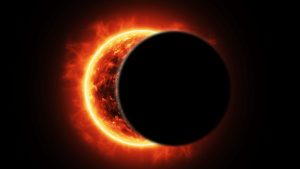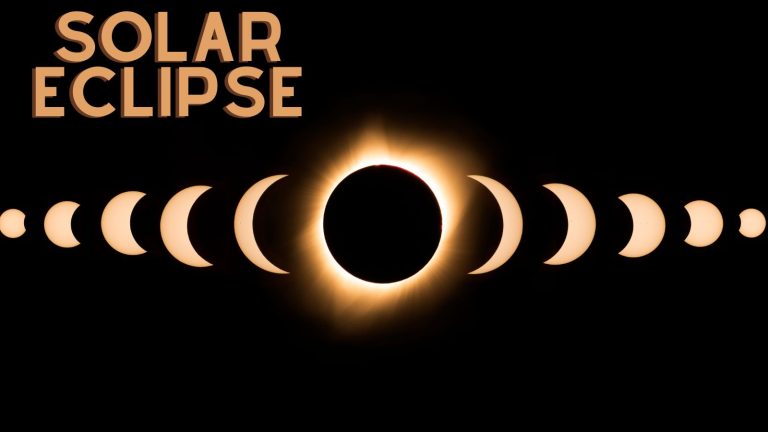Discover the celestial spectacle of the 2024 solar eclipse, marking a moment in time when the moon passes directly between the Earth and the sun, blocking its light either entirely or partially. This guide provides all you need to know about this awe-inspiring event, including the importance of proper eye protection and where to experience the totality of the eclipse.
Introduction to the 2024 Solar Eclipse
The solar eclipse of 2024 is a captivating astronomical event where the Moon positions itself between the Earth and the Sun. This alignment can either partially or entirely obscure the Sun’s light, creating a dramatic change from day to night for observers in the right locations. Solar eclipses have mesmerized humanity throughout history, symbolizing the intricate celestial dance between our planet, its lunar companion, and the star at our system’s heart. As the 2024 eclipse draws near, anticipation builds for this rare chance to experience daytime darkness.
Here’s the table with the local times for the 2024 solar eclipse across various cities:
| City | Time (Local) |
| Caribou, Maine | 3:32-3:34 p.m. EDT |
| Dallas, Texas | 1:40-1:44 p.m. CDT |
| Idabel, Oklahoma | 1:45-1:49 p.m. CDT |
| Little Rock, Arkansas | 1:51-1:54 p.m. CDT |
| Poplar Bluff, Missouri | 1:56-2:00 p.m. CDT |
| Paducah, Kentucky | 2:00-2:02 p.m. CDT |
| Carbondale, Illinois | 1:59-2:03 p.m. CDT |
| Evansville, Indiana | 2:02-2:05 p.m. CDT |
| Cleveland, Ohio | 3:13-3:17 p.m. EDT |
| Erie, Pennsylvania | 3:16-3:20 p.m. EDT |
| Buffalo, New York | 3:18-3:22 p.m. EDT |
| Burlington, Vermont | 3:26-3:29 p.m. EDT |
| Lancaster, New Hampshire | 3:27-3:30 p.m. EDT |
Understanding Solar Eclipses: The Science Behind the Phenomenon
A solar eclipse occurs when the Moon passes between the Earth and the Sun, casting a shadow that briefly transforms day into night. This natural wonder unites communities, scientists, and enthusiasts, all keen to observe and study the event’s mystique and splendor. The phenomenon of the path of totality, a relatively narrow band moving across the Earth’s surface, plays a crucial role in the eclipse experience. Those within this path can witness a total solar eclipse, where the sky darkens as if at dawn or dusk, provided the weather and cloud cover permit. However, outside this path, observers will only see a partial eclipse, with the sky dimming depending on the Moon’s coverage of the Sun in their specific location.
The Importance of Protecting Your Eyes During the Eclipse

The Sun’s surface is exceedingly bright, so much so that looking directly at any part of it can produce enough light to damage retinal cells. This is true even if the Sun is partially covered by the Moon. Hence, skygazers worldwide are advised to wear protective eyewear, such as licensed eclipse glasses, during the partial phases of the eclipse. Neglecting to use proper protection can lead to permanent retinal damage or even blindness. As part of their efforts to ensure a safe viewing experience for everyone, NASA plans to broadcast the eclipse live, offering conversations with experts and telescope views from various locations along the eclipse path.
What Time is the 2024 Solar Eclipse?
Mark your calendars for this not-to-be-missed celestial event. To fully immerse yourself in this unique experience, being well-informed about the eclipse’s timing and the optimal viewing locations is essential. Preparation and knowledge are your best tools for enjoying the eclipse to its fullest, safely, and memorably.
The Path of Totality: Key Locations Along the Path
The path of totality for the 2024 eclipse promises a spectacular view for those within its reach. This section guides you through planning your eclipse journey, emphasizing safety tips for a truly unforgettable experience.
FAQs About the 2024 Solar Eclipse
What exactly is a solar eclipse?
A solar eclipse is an astronomical event that occurs when the Moon moves between the Earth and the Sun, blocking all or part of the Sun’s light. This can happen only at the new moon when the Sun and the Moon are in conjunction as seen from Earth.
How does the path of totality affect the viewing experience?
The path of totality is a relatively narrow band across the Earth’s surface where observers can witness a total solar eclipse. Here, the Moon completely covers the Sun, and the sky darkens significantly, mimicking the conditions of dawn or dusk. Outside this path, people will see only a partial eclipse, where the sky dims slightly depending on the Moon’s coverage of the Sun.
Why is eye protection crucial during a solar eclipse?
The Sun’s surface emits intense light that can damage the retinas of the eyes, leading to permanent damage or blindness. Even during a solar eclipse, looking at the Sun without proper protection, like eclipse glasses, can cause serious eye harm. This is especially true during the partial phases of the eclipse.
Will NASA provide a live broadcast of the 2024 solar eclipse?
Yes, NASA plans to offer a live broadcast of the eclipse. This will include conversations with experts and telescope views from various locations along the eclipse path, ensuring that even those not in the path of totality can experience the event.
Can a partial solar eclipse still affect ambient lighting?
Yes, during a partial solar eclipse, the amount of sunlight reaching certain areas is reduced, leading to a noticeable dimming of the sky. The extent of this dimming depends on how much of the Sun’s disk is obscured by the Moon from the observer’s location.
Is it possible to photograph a solar eclipse? What precautions should be taken?
It is possible to photograph a solar eclipse, but it requires proper preparation and equipment, such as a camera with a telephoto lens, a tripod, and solar filters to protect the camera’s sensor and the photographer’s eyes. Photographers should never look directly at the Sun through the camera’s viewfinder without appropriate solar filters.
What should I do to prepare for viewing the 2024 solar eclipse?
To prepare for viewing the solar eclipse, ensure you have certified eclipse glasses for eye protection and plan your location by checking maps for the path of totality. Consider the weather and have a backup plan in case of poor conditions. Additionally, familiarize yourself with the timing of the eclipse in your area to not miss the brief period of totality.



